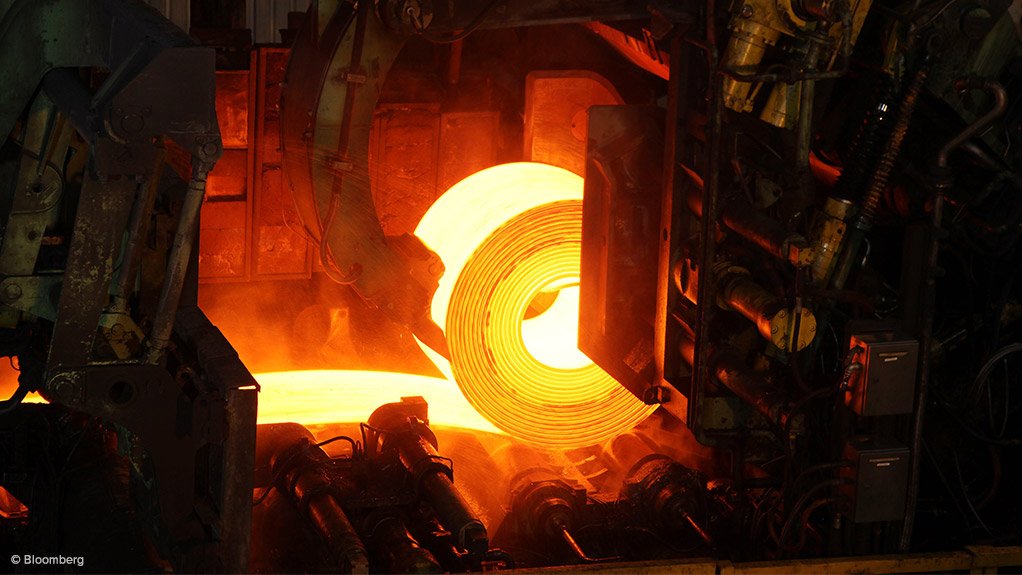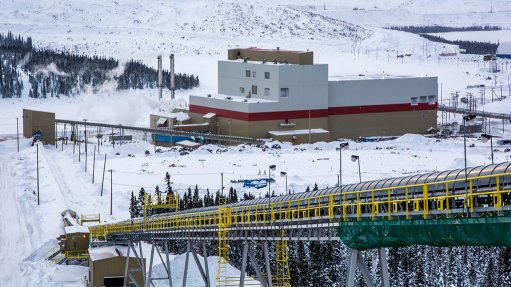Company’s new furnaces under scrutiny


NOT SO GREEN The fact that ArcelorMittal continues to build coal-fired furnaces has come under the microscope
Luxemburg-based ArcelorMittal’s path to net zero emissions has come under scrutiny as it starts the construction of a new coal-based blast furnace in India which contrasts with low-carbon steelmaking in Europe and Canada.
In a report released last month it was suggested that ArcelorMittal should prepare for difficult questions in its upcoming annual general meeting in May about how the company intends to reach net zero by 2050, as the company builds this new coal-powered blast furnaces in a joint venture with metal producer Nippon Steel of Japan (AM/NS India).
In a new Institute for Energy Economics and Financial Analysis (IEEFA) report,named ‘Green Steel for Europe andBlast Furnaces for India’, it outlines the company’s development plans and highlights the very different technology and emissions approaches being taken in India and Europe.
IEEFA steel analyst lead Simon Nicholas and energy finance analyst Soroush Basirat compiled the report.
Nicholas said that ArcelorMittal – the world’s second-largest steelmaker – appeared to be planning a two-speed decarbonisation, with hydrogen-ready, direct reduced iron (DRI) technology to be installed overwhelmingly in developed nations while building more coal-consuming blast furnaces in the developing Global South.
In October 2022, ArcelorMittal broke ground on its $1.3-billion transition to DRI-based steelmaking in Ontario, Canada, and it has similar plans for Spain, France, Belgium and Germany.
AM/NS India has now begun construction of two new blast furnaces at Hazira, Gujarat, and is planning a further expansion of capacity of five-million tons a year as well as new integrated steel plants at Kendrapara (24-million tons a year) and Paradip (six-million tons a year) in the state of Odisha.
The steelmaking technology being planned for the very large Odisha expansions has not been disclosed.
The blast furnace expansions under construction at Hazira, totalling six-million tons a year of capacity will increase carbon emissions by approximately two tonnes a tonne of crude steel produced — that is, about 12-million tons a year of additional carbon dioxide equivalent emissions if running at full capacity.
The further expansions being planned for Odisha would add much more if they are also based on blast furnaces.
A 2021 report by think tank E3G and the US Department of Energy’s Pacific Northwest National Laboratory found thatblast furnaces without carbon capture utilisation and storage (CCUS) will need to be phased out by 2045 for the global steel sector to be on an orderly 1.5 °C pathway and no more new blast furnaces without CCUS should come online after 2025 to avoid stranded assets.
AM/NS India’s expansion plan will see two new blast furnaces — without CCUS — brought online in 2025 and 2026.
Basirat said that there are no full-scale CCUS facilities for blast furnace-based steelmaking operational anywhere in the world and only a few small pilot projects underway or planned.
“In addition to a very limited track record in steel, CCUS has had a problematic and disappointing history in other sectors like power generation and gas production,” he added.
“We’ve observed an acceleration in hydrogen-ready DRI technology rollout recently that is leaving CCUS technology even further behind,” stressed Nicholas.
Nicholas added that with no major breakthrough in CCUS for coal-based steelmaking on the horizon investors should be asking questions that challenge ArcelorMittal about its Indian expansion, the technology choices being made and how that aligns with the company’s 2050 net zero emissions target.
Signatories to the Climate Action 100+ initiative make up almost half of ArcelorMittal’s top 20 shareholders — including Amundi, BlackRock, Invesco, AllianceBernstein, DWS Investment and State Street Global Advisors.
In its most recent benchmark assessments in October 2022, Climate Action 100+ found that ArcelorMittal currently fails to meet a number of criteria, including that it has no short-term (2025) greenhouse gas emissions reduction target.
Additionally, its medium-term (2026–2035) target is not aligned with the goal of limiting global warming to 1.5 °C above preindustrial levels and it has failed to decarbonise its capital expenditures.
Major international steelmakers such as ArcelorMittal are keen to enter the Indian market because it is the key steel growth market globally, with a planned doubling in capacity this decade alone.
Europe is already accelerating its shift away from reliance on coal-based steelmaking by developing new hydrogen-based steelmaking plants, including plans by ArcelorMittal itself.
The report concludes that the efforts to bring the global steel sector towards net zero emissions will not be achieved if India relies on new coal-based steelmaking to meet its very high forecast demand growth.
Comments
Press Office
Announcements
What's On
Subscribe to improve your user experience...
Option 1 (equivalent of R125 a month):
Receive a weekly copy of Creamer Media's Engineering News & Mining Weekly magazine
(print copy for those in South Africa and e-magazine for those outside of South Africa)
Receive daily email newsletters
Access to full search results
Access archive of magazine back copies
Access to Projects in Progress
Access to ONE Research Report of your choice in PDF format
Option 2 (equivalent of R375 a month):
All benefits from Option 1
PLUS
Access to Creamer Media's Research Channel Africa for ALL Research Reports, in PDF format, on various industrial and mining sectors
including Electricity; Water; Energy Transition; Hydrogen; Roads, Rail and Ports; Coal; Gold; Platinum; Battery Metals; etc.
Already a subscriber?
Forgotten your password?
Receive weekly copy of Creamer Media's Engineering News & Mining Weekly magazine (print copy for those in South Africa and e-magazine for those outside of South Africa)
➕
Recieve daily email newsletters
➕
Access to full search results
➕
Access archive of magazine back copies
➕
Access to Projects in Progress
➕
Access to ONE Research Report of your choice in PDF format
RESEARCH CHANNEL AFRICA
R4500 (equivalent of R375 a month)
SUBSCRIBEAll benefits from Option 1
➕
Access to Creamer Media's Research Channel Africa for ALL Research Reports on various industrial and mining sectors, in PDF format, including on:
Electricity
➕
Water
➕
Energy Transition
➕
Hydrogen
➕
Roads, Rail and Ports
➕
Coal
➕
Gold
➕
Platinum
➕
Battery Metals
➕
etc.
Receive all benefits from Option 1 or Option 2 delivered to numerous people at your company
➕
Multiple User names and Passwords for simultaneous log-ins
➕
Intranet integration access to all in your organisation



















